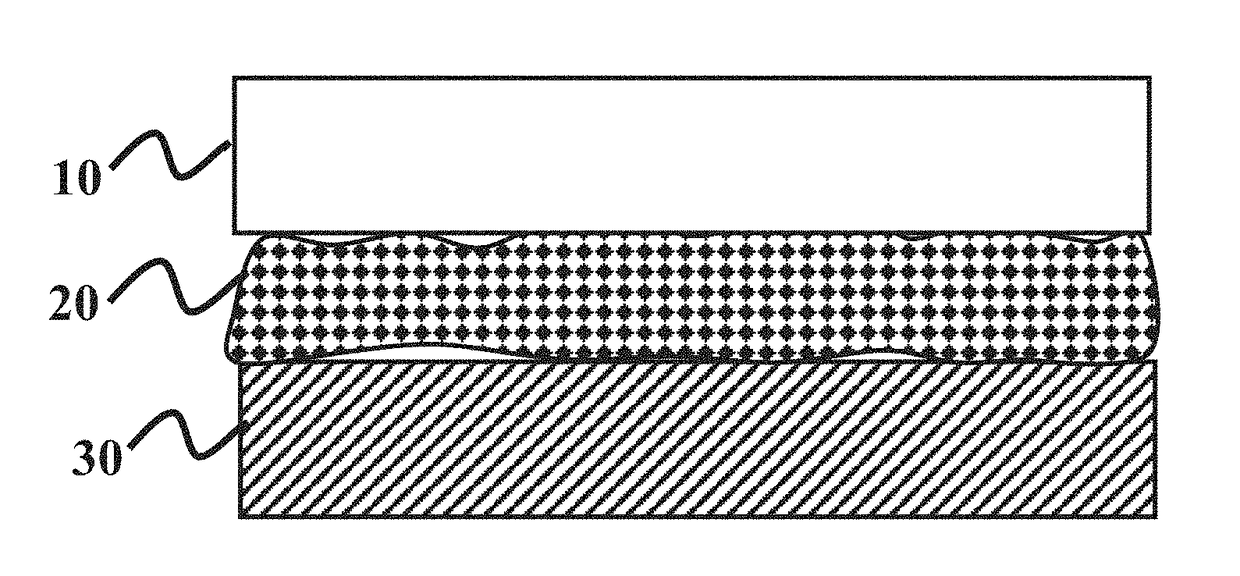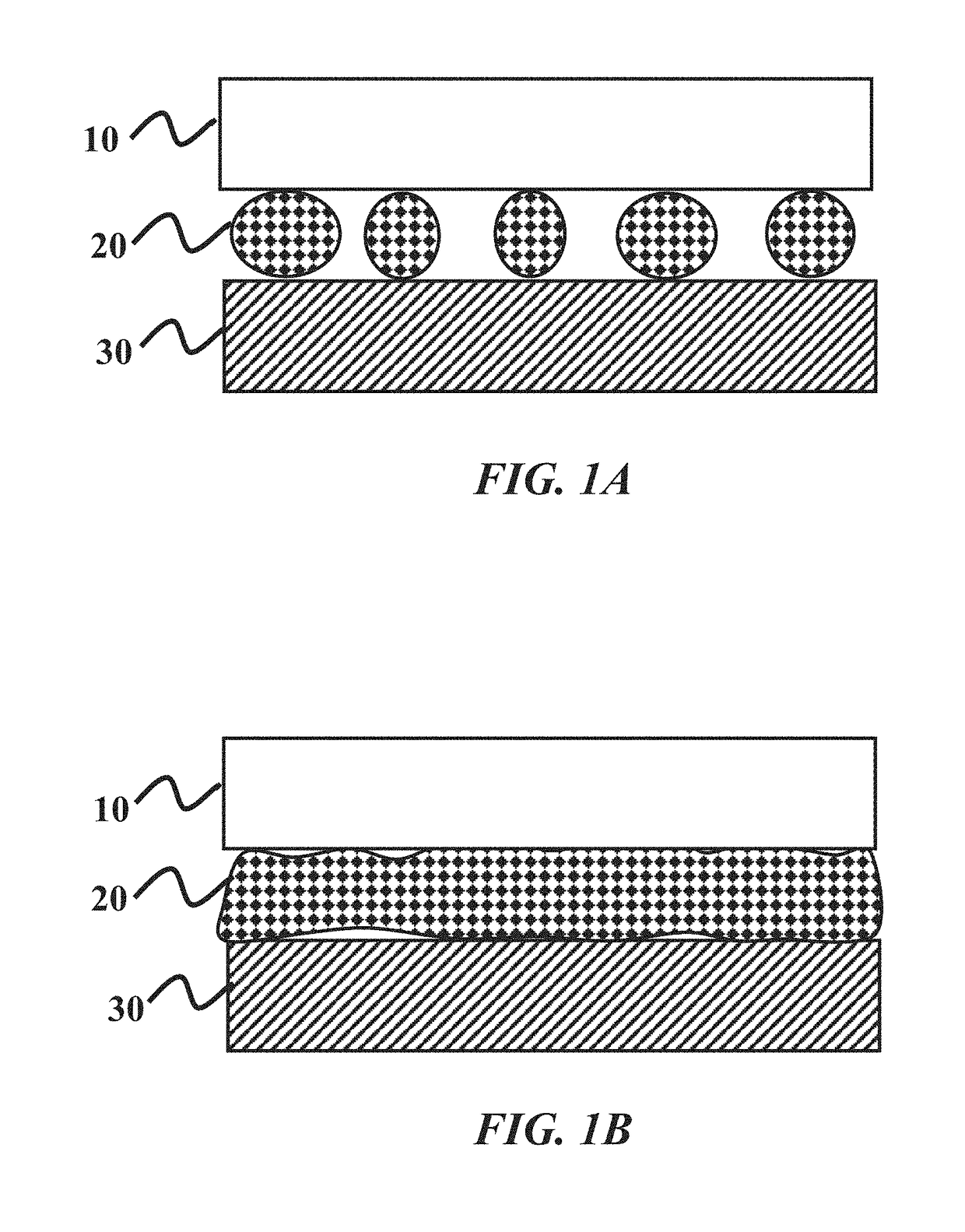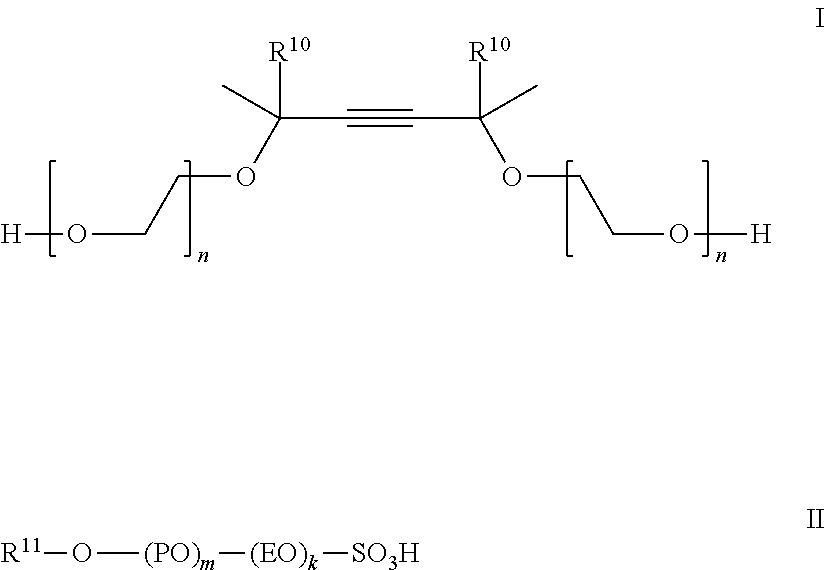Increased wetting of colloidal silica as a polishing slurry
- Summary
- Abstract
- Description
- Claims
- Application Information
AI Technical Summary
Benefits of technology
Problems solved by technology
Method used
Image
Examples
example 1
[0228]Colloidal silica compositions disclosed in Table 1 were placed on three different microfiber pads and contact angle was measured according to the following procedure. The solution of the desired concentration is prepared and approximately 2-3 mL of the solution is placed in 10 mL syringe. The syringe is then placed into a contact angle measurement apparatus equipped with data collection software. The test substrate, i.e., a microfiber cloth, is then placed on the substrate holder in view of the apparatus' camera which captures the delivery of the drop from the syringe to the test substrate. A single drop is then dispensed and contact angle is measured via the camera capture and software. Contact angle data for each of the microfiber clothes are shown in Table 2.
[0229]The control colloidal silica composition is one with LAE 24-7 and has a 30 second contact angle of 59.45 degrees. Dynol 960, Dynol 980, Dynol 800, Dynol 810, Dynol 604, X-AES, Dynol 604, Dynol 607, and Alfoterra 1...
example 2
[0231]The dynamic surface tension of all surfactants utilized in Example 1 was measured. A contact angle apparatus was used to quantitatively measure the angle at which a drop of surfactant or polishing composition contacts sapphire surface. The polishing composition of desired concentration is placed into the apparatus where a single drop of the composition can be delivered to the sapphire surface. The deliverance of the drop to the substrate is recorded by a camera. The video captured by the camera is sent to a computer were the contact angle can be determined. Results are shown in Table 3.
[0232]The data in this example show that there is not a good correlation between a low surface angle at 30 second for a colloidal silica composition with a surfactant and the dynamic surface tension of the corresponding surfactant.
TABLE 3Measured Dynamic Surface Tensions for Various PolishingCompositions on Different Polishing PadsMicrofiberMicrofiberPad: SUBAPad PF-HA 1109S800E09Contact AngleSu...
example 3
[0233]Utilizing the test procedures described in Example 1, five surfactant compositions and their contact angles were tested on two different sapphire wafers. Surfactant compositions are shown in Table 4. Results are shown in Tables 5-10.
[0234]The five polishing compositions were chosen because the five surfactants exhibit the smallest contact angles on the microfiber pads in the previous testing. The data in this example show that these surfactants lower the contact angles on the tested Wafers. The tested surfactants cause a greater reduction in contact angle on a more hydrophobic surface. Among the tested surfactants, Dynol 980 exhibits the lowest contact angle.
TABLE 4Polishing Compositions Tested on Two Different Sapphire WafersCompenent4849505152Alfoterra 123-8S,0.005890%Dynol 800, 80%0.0063X-AES, 23.5%0.022Dynol 980, 30-50%0.0129LAE 24-70.0047Colloidal silica,49.994249.993749.97849.987149.9953Nalco TX15717,30-60%Colloidal silica,TX15763, 30-50%Total5050505050Surfactant, ppm104...
PUM
 Login to View More
Login to View More Abstract
Description
Claims
Application Information
 Login to View More
Login to View More - R&D
- Intellectual Property
- Life Sciences
- Materials
- Tech Scout
- Unparalleled Data Quality
- Higher Quality Content
- 60% Fewer Hallucinations
Browse by: Latest US Patents, China's latest patents, Technical Efficacy Thesaurus, Application Domain, Technology Topic, Popular Technical Reports.
© 2025 PatSnap. All rights reserved.Legal|Privacy policy|Modern Slavery Act Transparency Statement|Sitemap|About US| Contact US: help@patsnap.com



